As lockdown restrictions lifted, I finally got the chance to go to Jersey. I have been in Jersey for nearly a month now where I have been conducting fieldwork for my final year master’s project with Blue Marine Foundation (BLUE), Jersey’s Marine Resources Team and the University of Plymouth.
During the master’s programme in marine conservation, I have developed a deep understanding on the consequences of degraded marine environments and the importance of conserving them. I previously worked on coral reef restoration projects when I was living in Indonesia and the Maldives, but I have always been intrigued to learn about the management and protection of other marine coastal habitats around the world.
Seagrass meadows are not as popular as the colourful coral reefs but if you look carefully, you will see the wonders within them. We don’t often realise all the benefits they provide. They keep coastal waters clean and clear, provide shoreline protection, act as nursery grounds for many marine animals, and are key to sustaining fisheries. Seagrass meadows are vitally important in the fight against climate change. Seagrass can capture carbon 35 times faster than rainforests which turns them into priority habitats to conserve. The carbon stored by coastal marine habitats is known as blue carbon. However, the mechanisms that allow for blue carbon to be stored and fisheries to thrive are being destroyed.
Jersey is home to a variety of seagrass meadows. Since the banning of mobile fishing gear in some areas, seagrass meadows have been recovering! My final year project is focused on the meadows located on the East side of the island where trawling and dredging are prohibited. Zostera marina is the species of seagrass we decided to study. We want to find out how much blue carbon they capture and what species of marine animals live there.
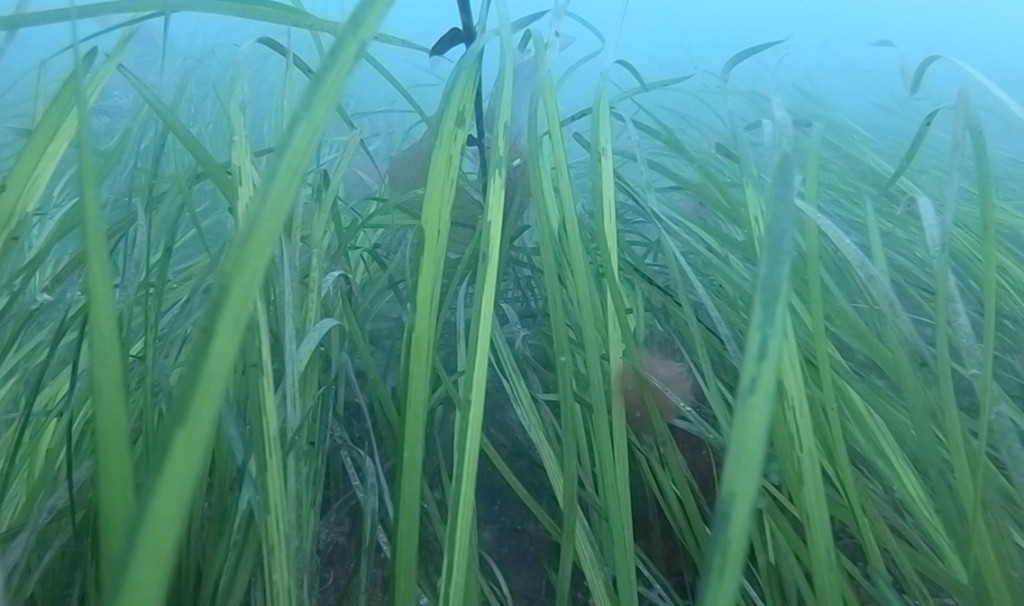
This is how Zostera marina looks underwater. They inhabit the shallow waters and can form vast meadows when protected from detrimental human activities.
A day in the field always starts by planning where to go first. Jersey has some of the highest tides in the world so there is a lot of preparation before heading out on the boat.
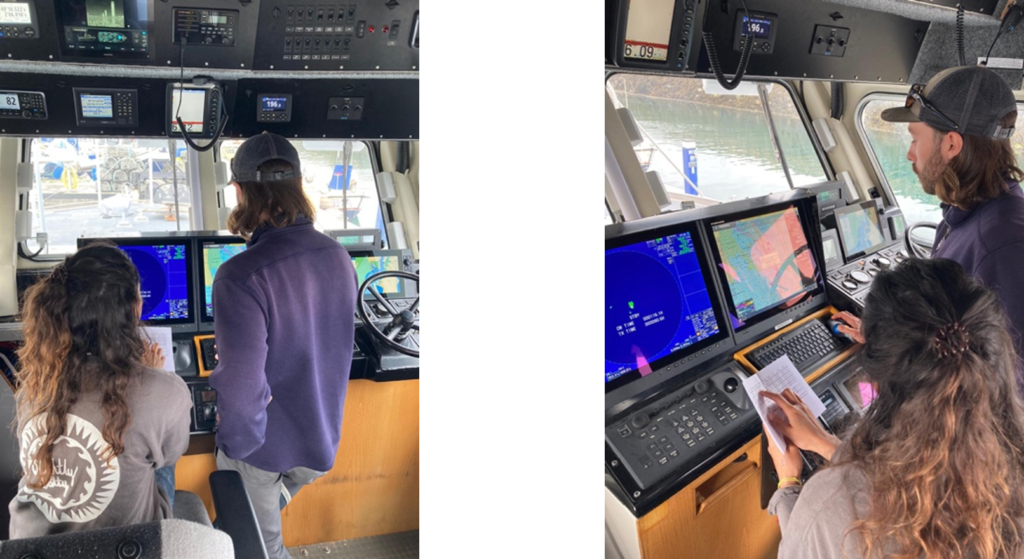
Marine & Fisheries Assistant Officer, Alex Plaster, and I planning the best route to the seagrass study sites.

Onboard Norman Le Brocq, Jersey’s Marine Resources Team Vessel. Marine & Fisheries Officer, Dean Pitman, and I, about to let go of the “Van Veen Grab”.
Seagrass meadows capture carbon and store it within the seabed. As a result, my project focused on gathering sediment samples, which can then be used to calculate how much blue carbon is stored in seagrass beds. To find this out we used a “Van Veen Grab”, a type of equipment used to grab sediments from the seabed.
Once the sediment samples are collected, the blue carbon can be measured and small animals that live within the sediment can be identified. The blue carbon is measured by heating up the sediments to temperatures up to 450 °C! To do this, the sediments were transported to a laboratory at the University of Plymouth, where there is equipment suited for this type of experiment.
To know the different species that live within the seagrass sediments, we sieved the sediment samples, and every animal bigger than 1mm was identified. We used a hose, and 2 different size sieves. This is a great technique used to separate the animals from the sediment. To identify the small animals, we transported them to the Environmental Department, in Jersey, and used the laboratory microscopes.
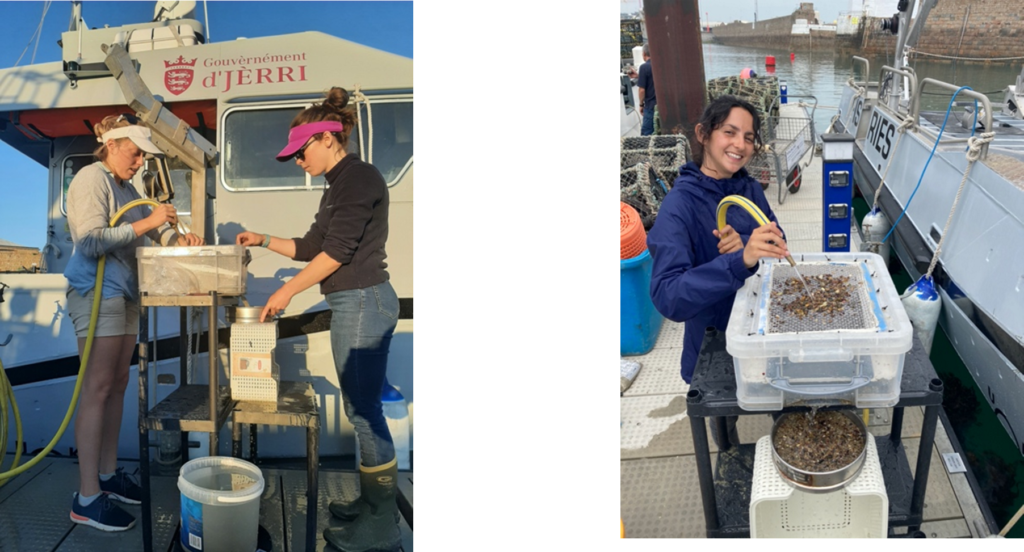
Left photo; Marine Resources Data Officer & PhD researcher, Samantha Blampied, and BLUE’s Jersey Project Manager, Appin Williamson, sieving the sediment samples. Right photo; Me having a go at sieving sediments.
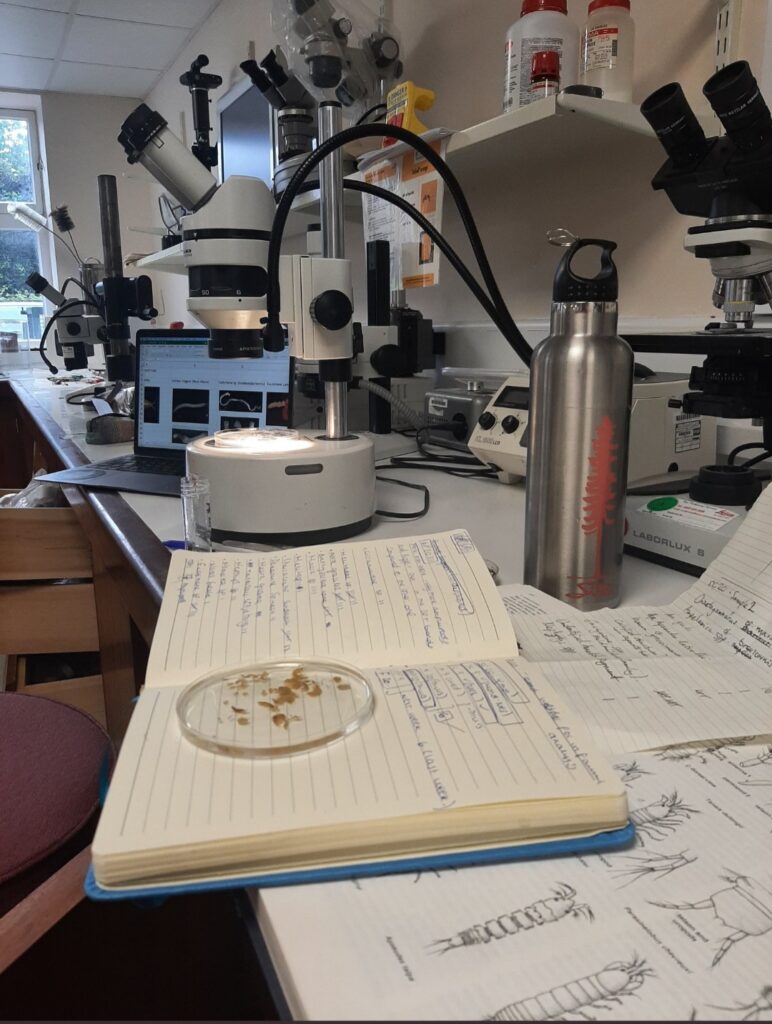
This is the microscope I used to identify the small animals we found in the seagrass sediment. The small animals are harder to see but are just as important as the big ones.
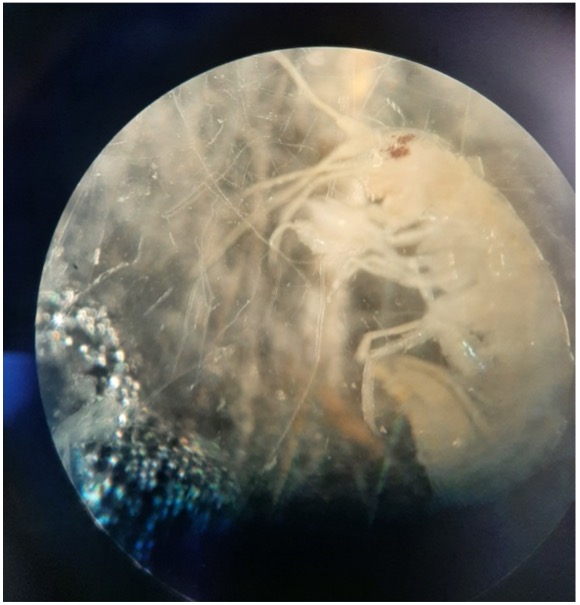
This is an amphipod, a small crustacean. They are hard to see with the naked eye, but the microscope makes it so much easier to spot them. There were lots of them living in the seagrass sediments.
Healthy seagrass meadows are highly biodiverse and sustain commercially important fish and shellfish species. To understand whether seagrass meadows in Jersey are important habitats for local fisheries we used Baited Remote Underwater Videos – BRUVs. This consists of taking underwater videos using bait to attract marine life.

Me preparing some bait to use for the BRUVs. We used mackerel.

BLUE’s Jersey Project Officer, Freddie Watson, showing the BRUVs set-up. The camera and bait are deployed from a boat and left for an hour to record.
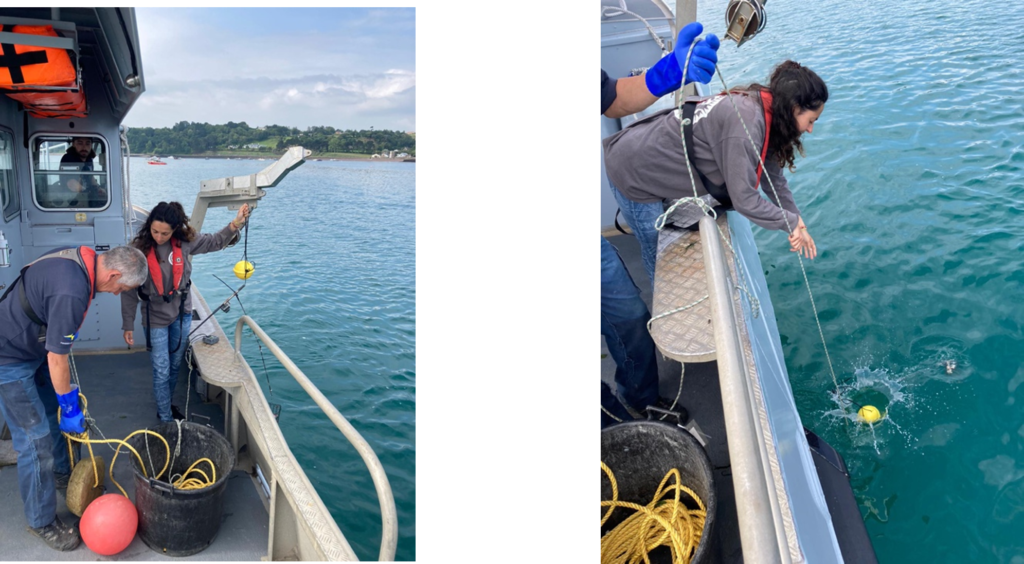
Left and Right photo; Marine & Fisheries Assistant Officer, Dean Pitman, and I, caught in action deploying the BRUVs. They are deployed with caution on each seagrass study site.
The following photos are shots captured from our BRUVs footage.
Can you spot the marine animals?

A large male Spider Crab held onto the baited box, together with a Black Bream, and a couple of Catsharks!
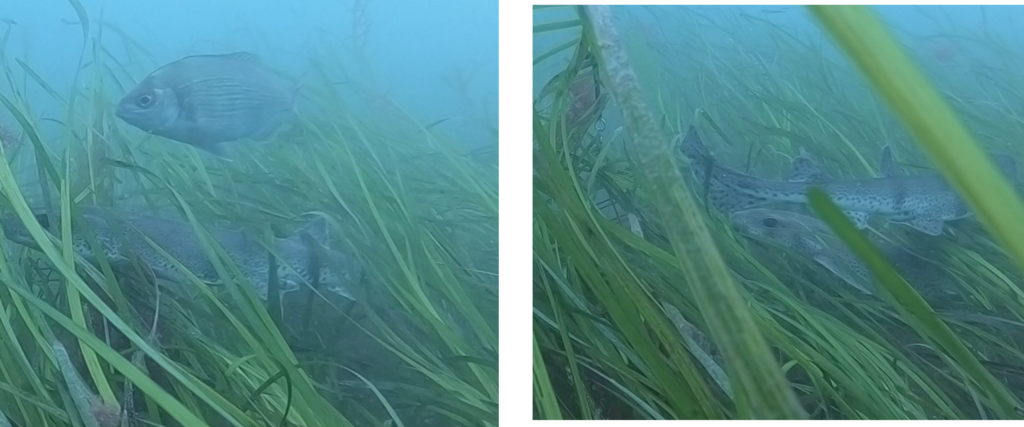
Left photo; A black bream and a catshark swimming together. Right photo; Two catsharks trying to find the bait box!
A curious cuttlefish checking out the bait!
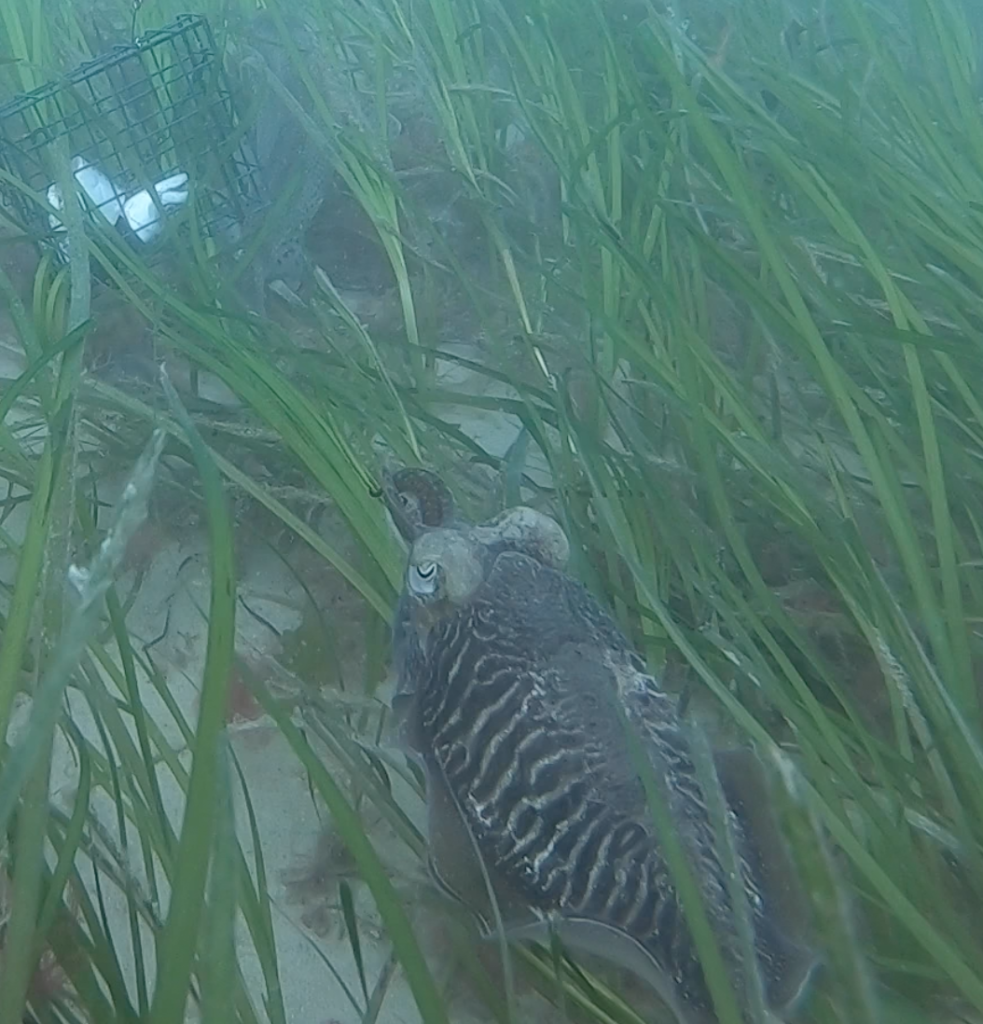
If you are intrigued to see what happens in Jersey waters, feel free to watch some of the video footage by clicking here.
For the BRUV work, BLUE works with fishermen’s boats. It was great to work with fishermen that knew so much about the local waters and wanted to contribute to the project.
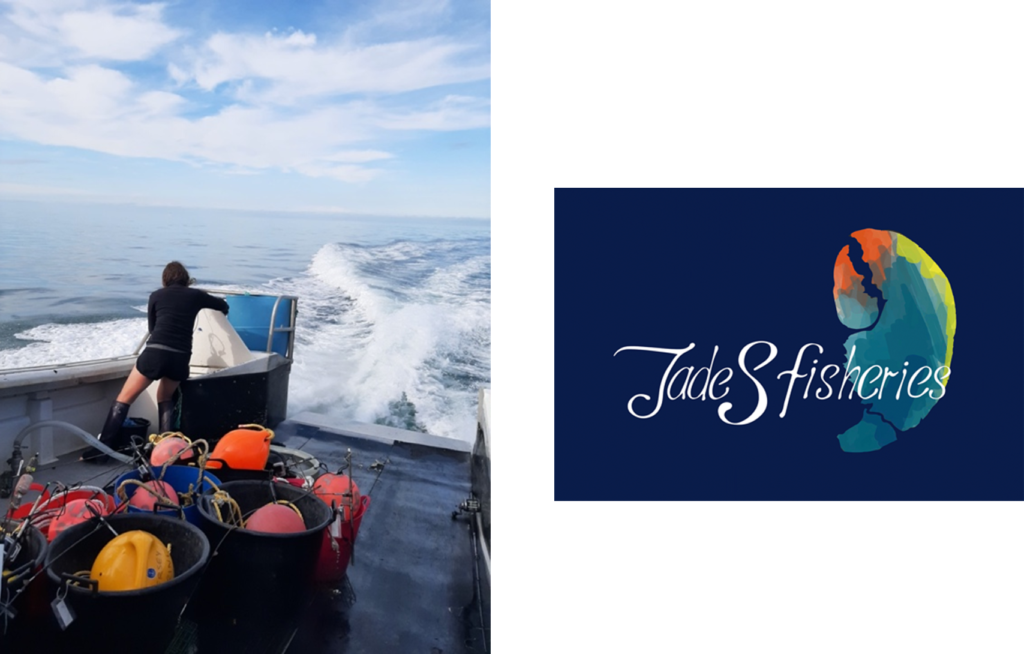
The BRUVs on board Jade-S Fisheries, a local & sustainable fisheries boat run by Skipper, Leyton, and First Mate, Gabby. They offer fresh and sustainably caught seafood.
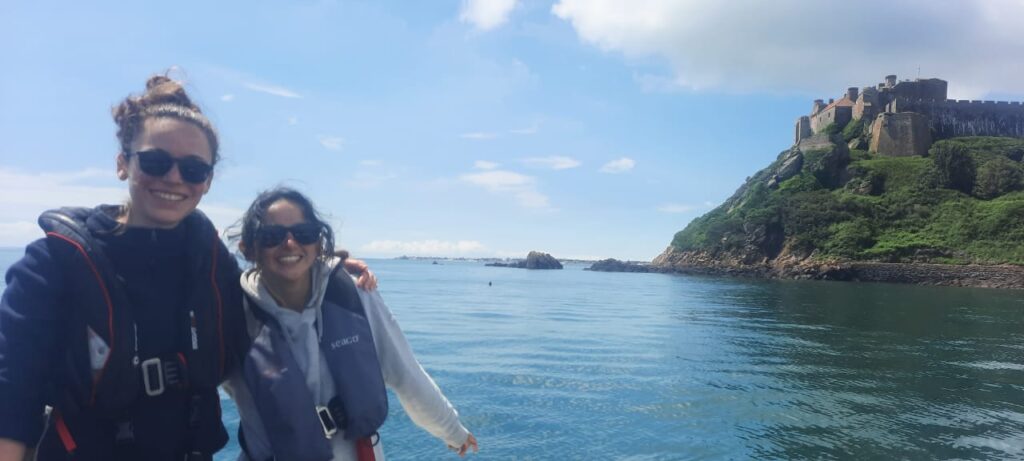
On board Jade-S Fisheries Boat, BLUE’s Jersey Project Manager, and I, returning to the harbour from a successful day of BRUV work.
The sediment samples and videos will now be analysed. The results will be used to further understand the potential of these seagrass meadows in capturing blue carbon and their importance to fisheries within Jersey waters.
This is one of several research projects being supported by BLUE in Jersey aiming to provide evidence in support of MPAs to ensure sustainable fisheries. These initiatives are providing opportunities for fishermen and conservationists to work together. This work on seagrass is especially important for Jersey and its commitments to carbon neutrality by 2030.
Banner photo credit: Dimitris Poursanidis



















